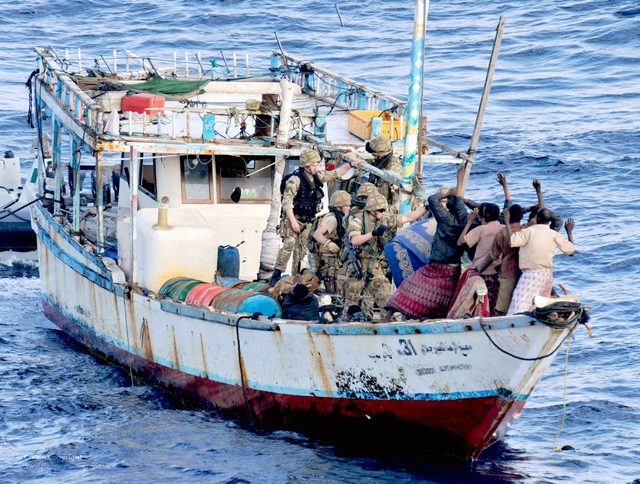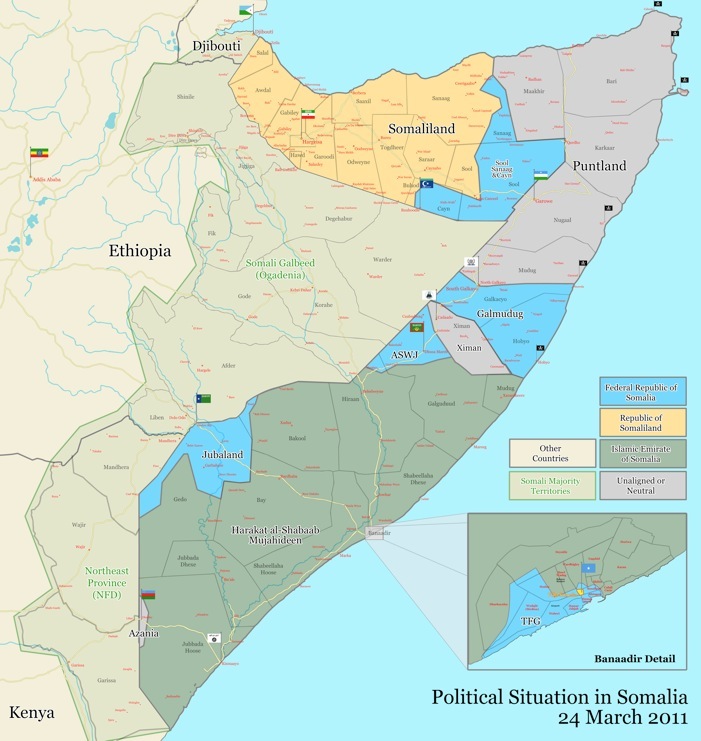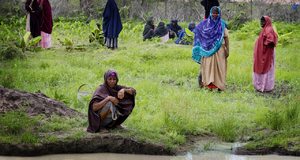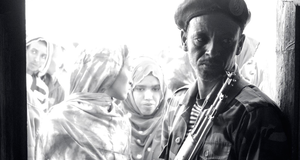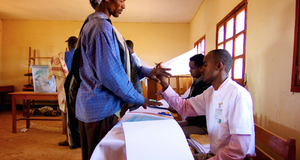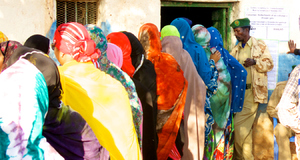Somali Piracy: Causes and Consequences
By
2011, Vol. 3 No. 09 | pg. 1/2 | » Since the early 1990s, rampant piracy off the coast of Somalia has become a major issue for global trade and security, prompting strong responses from the international community. In 2010 alone, the collective cost of ransom money, military protection and cargo insurance as a result of piracy is estimated to have been between 7 and 12 billion dollars.1 This number doesn’t include the collective loss of trade revenue from nearby countries such as Egypt, Kenya, Yemen and Nigeria, estimated to be at least $1.25 billion annually.2 But despite the attempted military intervention of the United Nations, EU and NATO, piracy in Somalia continues to grow. Due to the country’s lack of a central government, no internal authority stands in its way. In fact, piracy along Somalia’s large coastline has gained support from local authorities, most notably Al-Shabaab, an Islamist insurgent group with ties to Al-Qaeda that continues to wage civil war with the internationally recognized Transitional Federal Government for control of Somalia.3
NATO led counter-piracy troops intercept a suspected Somali pirated vessel. Photo: UK Ministry of Defence SA-2
The profit of piracy, estimated at just under $300 million in 20104, sustains its growth and internal support. Ports and towns along the Gulf of Aden have benefited enormously from pirate activity, making it a significant part of Somalia’s informal economy. Haradheere, a small port town on Somalia’ East coast, even has a twenty-four hour stock exchange – members of the community contribute weapons, funding and soldiers, and receive a portion of the ransom money in return.5 But support goes far beyond domestic communities. Somali refuges as far as Canada and the United States contribute money to the cause6, in addition to financial backing from sources in Saudi Arabia, Dubai, Yemen and Al Qaeda.7 Thus what was once a disjointed group of Somalis reacting to illegal fishing and offshore waste dumping has turned into an organized and internationally funded operation. However, in order to fully understand this phenomenon, it proves essential to address its historical background, current operations and the proposed solutions from the international community. To pinpoint the cause of piracy in Somalia, it must first be understood that it is only one of the many negative consequences of the country’s history. Abdirahman Mohamud Farole, president of the autonomous Somali state of Puntland, perhaps summarized it best when he said in an interview with BBC that, “From the international point of view, piracy may be considered the number one issue, but from our point of view, it is a tiny part of the whole Somali problem – a phenomenon prompted by the collapse of the Somali state.”8 Indeed, Somalia’s history is filled with political instability. The 1884 Berlin Conference granted the Southern portion of modern-day Somali to Italy, and the Northern region, also known as the Puntalnd region, was granted to Great Britain.9 But in 1960, due to political pressure and instability, both countries gained independence and were conjoined – albeit with borders drawn by England and Italy, a major contributing factor to Somalia’s current lack of political unity.10 In 1969, after two presidential administrations with strong ties to European interests, Major General Mohamed Siad Barre led a military coup d’etat, plunging Somalia into communist rule until his overthrow in 1991.11 Since then, Somalia has been in a constant state of civil war, with a number of autonomous political entities.12 The internationally recognized and UN-supported Transitional Federal Government doesn’t even control the entirety of Mogadishu, Somalia’s capitol city.13 African Union troops in support of the Transitional Government continue to fight the Islamist Al-Shabaab Youth Movement, which controls a large portion of Southern Somalia. Adding to the instability are the self-proclaimed autonomous states of Puntland and Somaliland, both of which are located in the North, as seen in Figure 1.14 Thus a lack of a central government for twenty years has allowed for the development of piracy. In addition, displaced Somali refugees as a result of civil war, including over 260,000 registered in Kenya alone15, have provided ample opportunity for recruitment. But the origins of piracy are not solely a product of domestic instability. In multiple interviews, Somali pirates portray themselves as the nation’s unofficial coast guard, fighting against illegal fishing and waste dumping by foreign corporations.16 These accusations are actually quite legitimate. The United Nations estimates that illegal fishing companies from Europe and Asia rob Somali coastlines of over $300 million a year, mostly in the pursuit of yellow tuna.17 In addition, a 2005 UN Environmental Report highlighted a long history of illegal dumping off the coast of Somalia, most notably from “'Ndrangheta”, an Italian criminal organization.18 According to the report, it costs European companies $2.50 to dispose of one ton of waste off the horn of Africa, as opposed to $250 a ton to dispose of such material cleanly in Europe.19 While claims of illegal fishing and waste dumping are legitimate, they don’t provide complete explanation for piracy - such fishing and disposal is unfortunately prevalent among many African countries. The real motivation behind the growth of this pseudo-industry is that it has become incredibly profitable. Eyl, for example, a prominent center of pirate activity in Somalia’s Puntland region, is a bizarre setting of economic contradiction. Brand new Mercedes and Audis sit parked outside of traditional clay homes, while children play soccer along a backdrop of guarded cruise ships and commercial liners.20 This opportunity for wealth, unrivaled in Somalia’s informal economy, drives the expansion and local support of pirate organizations. The requested sums of ransom money, often in the millions, trickle down through the entire local economy. A UN report based on interviews in Eyl constructed a rough example of how the profits are distributed: 30% to those involved in the hijacking, 10% to the ground militia who control the area, 10% to local community elders and officials, 20% to financiers and 30% to sponsors.21 In addition, the family of any pirate killed in action receives significant compensation, and the first pirate to board the target ship usually gets a double share of the profits.22 Interestingly, despite Al-Shabaab’s public disapproval of piracy, a Kenyan-based security consultant found that as much as 50% of pirate profits go towards the Islamic group’s military efforts.23Continued on Next Page » Suggested Reading from Inquiries Journal
Inquiries Journal provides undergraduate and graduate students around the world a platform for the wide dissemination of academic work over a range of core disciplines. Representing the work of students from hundreds of institutions around the globe, Inquiries Journal's large database of academic articles is completely free. Learn more | Blog | Submit Latest in International Affairs |

